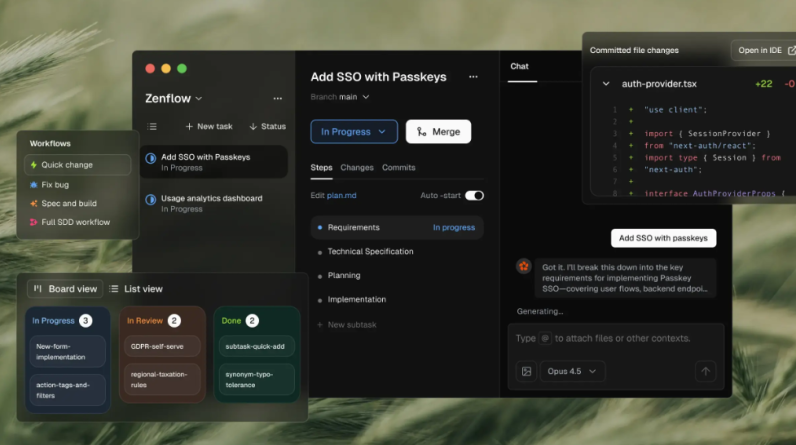
Since AI has moved from experimental technology to an enterprise imperative, IT leaders have discovered that the path to successful AI deployment and adoption is littered with costly missteps. From rushed pilots to misaligned expectations, organizations are learning hard lessons about what it takes to make AI work at scale. The good news? These failures follow predictable patterns, and the solutions are increasingly well understood by leaders who’ve already navigated these challenges firsthand.
Perhaps the most fundamental mistake organizations make is allowing excitement about AI capabilities to overshadow the essential question: What business problem are we actually trying to solve with AI?
Kumar Srivastava, chief technology officer at Turing Labs, identifies this as a root cause of most AI failures. “Most AI initiatives fail when driven by AI hype instead of clarity of the business objectives and a clear framing of the problem. AI is a technology and not a solution in itself.”
Srivastava further emphasizes that AI can help enterprises overcome business challenges, but only “when appropriate and suitable, can [AI] be used to solve these problems, often in conjunction with other technologies like automation.” The critical error, he warns, is “thinking of AI as a solution to business problems instead of a constituent of an ensemble of tools organized to solve the problem,” which “will almost always lead to missed expectations.”
It’s critical to view AI as a business tool, not a cool new technology, says Arsalan Khan, a speaker and advisor on AI strategy. “When AI is treated as a novelty, it stays a novelty,” he says. “When it’s approached as a strategic capability, it becomes a game-changer.”
The plug-and-play fallacy
Joan Goodchild, founder of CyberSavvy Media, points to another widespread misconception that derails AI initiatives. “A common misstep is treating AI as a plug-and-play tool rather than a capability that requires trust, context, and iteration,” she explains. This oversimplification leads organizations to “rush pilots without setting clear goals or understanding their data quality, which leads to underwhelming results.”
Jack Gold, president and principal analyst at J. Gold Associates, expands on this theme with a pointed critique of superficial AI adoption. “While AI is seen as a productivity enhancement tool, it really requires significant up-front understanding and design for the problems trying to be solved in the enterprise. The single biggest failure in deploying AI is in not fully understanding the new workloads and processes that can make AI a truly improved processing system.”
Gold cautions against over-reliance on pre-built solutions without proper context. “Organizations should not rely solely on off-the-shelf AI models, and, in particular, not rely on agentic AI systems without a complete understanding of what is trying to be accomplished, how AI can help, and what new process designs are needed to make AI an effective tool,” he says. His verdict is unequivocal: “Upfront design and architecture efforts are a critical requirement for any AI deployments.”
The data foundation problem
Peter Nichol, data and analytics leader for North America at Nestlé Health Science, illustrates how inadequate data foundations sabotage AI initiatives with a concrete retail example. “A retailer builds an AI model to optimize promotions, but promo data lives in three systems — the marketing CMS, POS, and finance ERP. None align on SKU timelines,” he explains. The consequence? “The model thinks a 20% discount started two weeks late, making lift calculations worthless. Executives lose trust in AI.”
This scenario shows how “AI programs often fail because debt in data, process, or structure derails them,” Nichol observes. When underlying data infrastructure lacks coherence, even sophisticated models produce unreliable results that undermine stakeholder confidence.
Scott Schober, president and CEO at Berkeley Varitronics Systems, shares a painful but instructive experience. “I learned the hard way that leaning too much on AI automation without double-checking results can get expensive,” he reveals. “After a few costly mistakes slipped through, I set up an internal review process to make sure I validate everything before acting.”
AI cannot replace humans
Schober’s lesson also carries important implications for AI governance: “Technology can help move things faster, but there’s no substitute for human oversight.” This balance between automation’s efficiency and human judgment’s irreplaceability remains essential, particularly in high-stakes business contexts.
Gold highlights another critical mistake that guarantees failure: “If AI is being deployed simply as an effort to displace humans, it’s likely to fail.” This approach misunderstands both AI’s capabilities and the organizational dynamics necessary for successful adoption.
Khan reinforces this point from an employee perspective: “If AI is positioned as a replacement rather than an augmentation tool, it’s dead on arrival. Successful adoption requires trust — and that trust must be built and modeled by leadership.”
Proven fixes and implementation strategies
The path to correcting these missteps begins with foundational work that many organizations are tempted to skip. Nichol advocates for architectural changes that prevent data fragmentation from undermining AI initiatives. “AI solutions must be fit-for-purpose,” he states.
For Nestle Health Science, he recommended creating “a promotion data product governed by a formal contract linking SKU, campaign ID, dates, and pricing rules.” This approach ensured that “by defining ‘promotion’ as a domain with ownership and SLAs before model development, AI consumes governed sources instead of raw extracts.”
The value of this structure? “Data contracts prevent fragmented ownership — one of the biggest blockers to AI adoption,” Nichol explains.
Goodchild’s remedy focuses on returning to fundamentals when pilots disappoint. “Fixing this often means going back to basics: clarify the use case, strengthen data pipelines, and establish feedback loops for continuous learning. AI success is less about deploying the latest model and more about aligning technology with the organization’s maturity, risk tolerance, and long-term strategy.”
Key lessons for CIOs
Singh synthesizes the learning journey into a pragmatic framework: “We cannot avoid AI, and we can’t be behind, but at the same time, successful implementation is required. IT must have clear goals and understand that scaling means reducing all technical debt [and] balancing speed of innovation with successful implementation.”
For CIOs navigating AI adoption, these hard-won lessons point toward important best practices: establish clear business objectives before selecting technologies, invest in a data foundation before deploying models, design robust governance with human oversight, position AI as augmentation rather than replacement, and align AI initiatives with organizational maturity rather than market hype.
Ready to put these lessons to work? Discover Elastic’s 8 steps to building a scalable generative AI app guide.






